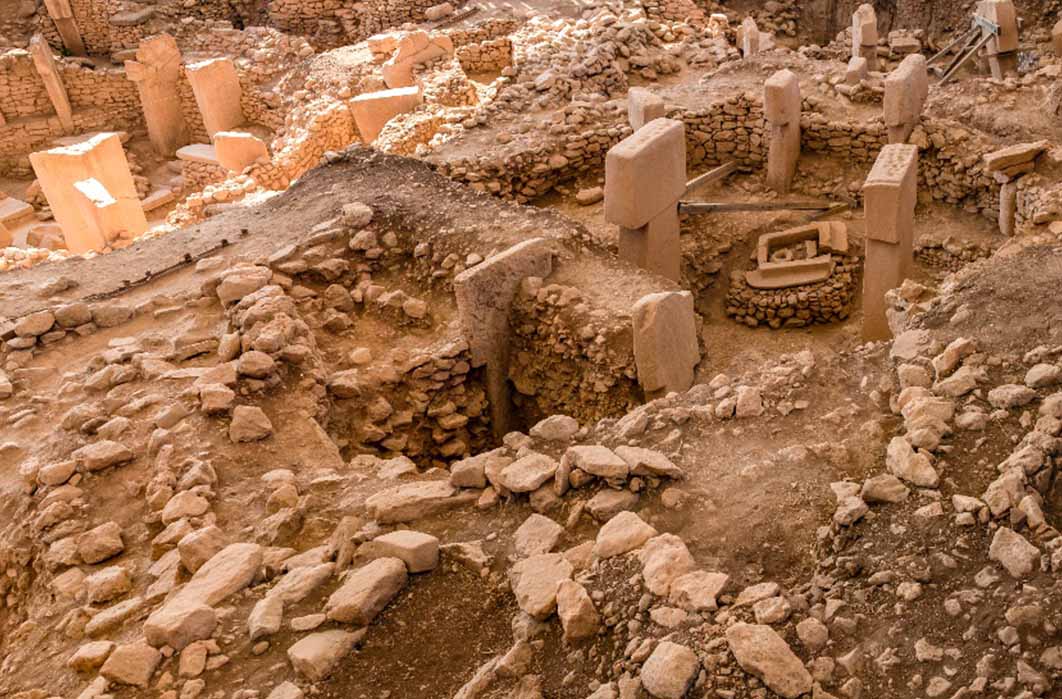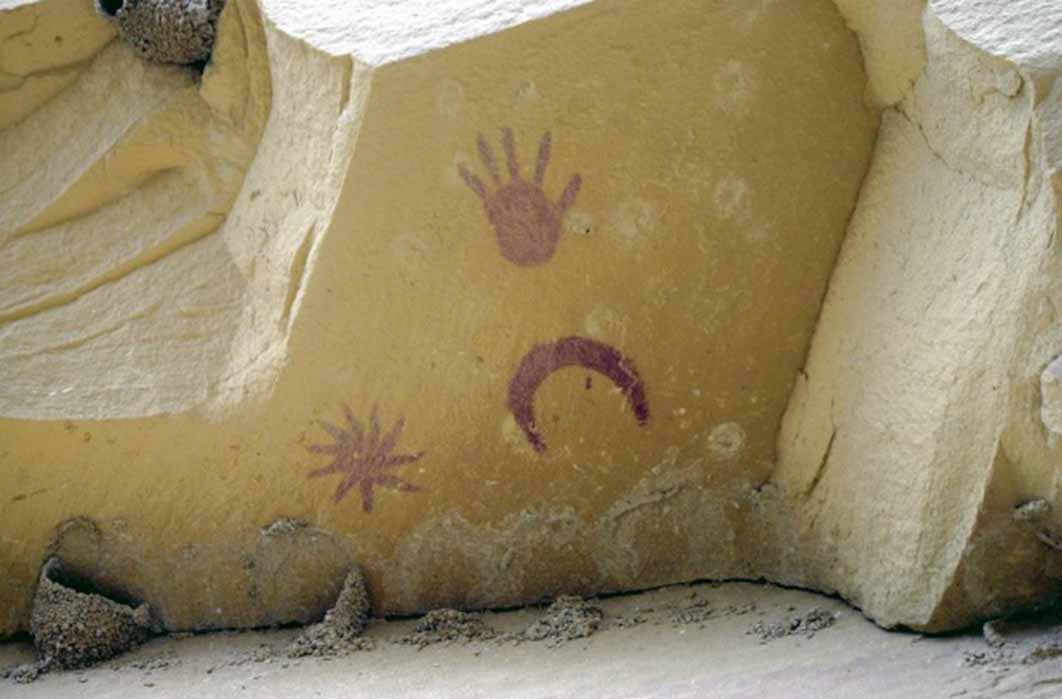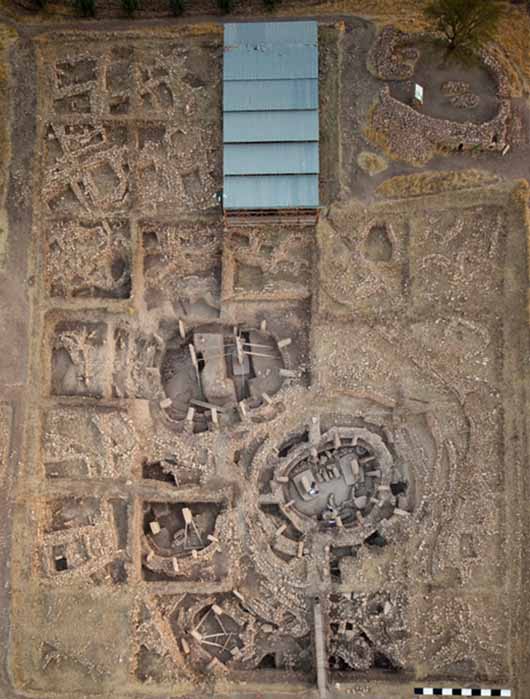
Anatolia’s Gōbekli Tepe And New Mexico’s Pueblo Bonito – Similar Necropolis Sites?
How would one describe Gōbekli Tepe, and all the other Tepe sites in the Şanlıurfa Province, south-eastern Anatolia? One might opine that these ancient sites contain a cluster of circular enclosures, with many rectangular buildings behind them. The circular enclosures often contain benches around the perimeter, and two monolithic standing stones in the center. And there is a possibility that these enclosures were roofed, and perhaps oriented with cosmic alignments or symbolism. Astonishingly one can find similar structures at the opposite side of the globe, at Puerto Bonito in the Chaco Canyon, New Mexico.
The archaeological site of Göbekli Tepe: main excavation area with four monumental circular buildings and adjacent rectangular buildings (Image: German Archaeological Institute, photo E. Kücük)
Chaco Canyon
Between 900 and 1150 AD, Chaco Canyon, situated in north-western New Mexico, was a major center of culture for the ancestral Puebloans. Here are several large building complexes that were initially thought to be towns; or, since they are walled, perhaps they qualify as citadels. The handful of these so-called citadels that reside within the Chaco Canyon all contain a cluster of seemingly ritual circular enclosures, plus many rectangular buildings behind them. The circular enclosures often contain benches around the perimeter, and sockets in the center that may have contained standing stones. And there is a possibility that these enclosures were roofed, as the circular sockets are thought to have held wooden pillars; and the entire Chaco site is replete with solar and lunar alignments.

Aerial view of Pueblo Bonita in Chaco Canyon (Bob Adams/ CC BY-SA 3.0)
So even on the surface, there are many similarities between the Gōbekli Tepe and Chaco sites that are intriguing, to say the least. But there is more. These Chaco Canyon sites, especially the main Pueblo Bonito ‘citadel’ - have been re-evaluated in recent years, because there is no real sign that these vast citadels were actually inhabited. Many of the tall ‘apartment blocks’, which reach up to four floors in height, have no easy access (no corridors); the individual rooms have no natural light; and there are no chimneys to allow fires for cooking or for warmth. In other words, these multi-story room complexes are completely hopeless and unusable as apartment blocks, which begs the question: what were these vast citadels, and their prison-like rooms, really for?

Pictograph at Chaco Canyon may depict the supernova of 1054 AD. This supernova and the Moon were in this configuration when the supernova was near its brightest. An imprint of a hand at the top signifies that this is a sacred place (Alex Marentes / CC BY-SA 2.0)
Since these citadels are undoubtedly aligned with Solar and Lunar alignments and transits, archaeologists are now suggesting that Chaco was a seasonal ritual center. People came to this temple site during the spring and autumn months, when weather conditions were more tolerable, and paid homage to the gods. And perhaps some of the more influential visitors were initiated into the mysteries of the cosmos at this great temple site, with the circular enclosures representing the zodiac or the cosmos, as could have happened at Gōbekli and Karahan Tepe. Chaco Canyon may have been the ‘Eleusinian Mystery School of the Americas’. Whatever the spiritual purpose of these circular enclosures may have been, when their secret rituals were completed the faithful pilgrims would have eventually departed and travelled back to their homes, leaving the site in the care of a few guardians and priests.
- The Enigmatic H-Symbol Linking Gōbekli Tepe, The Priesthood And The Zodiac
- From Urfa To Edessa To Şanlıurfa: Spanning 10,000 Years Of History
- Corpse Recycling at Gobekli Tepe: The True Purpose of its Ancient Stone Circles?
A Place Of Pilgrimage
In other words, the Chaco Canyon temple complexes may have been akin to the Masjid al-Haram temple site in modern Mecca; a name which either means Sacred Mosque or Forbidden Mosque depending upon whom one consults. Just as in modern Saudi Arabia, people from all over north and south America may have made a Hajj-style pilgrimage to Chaco, at least once in their lifetime, to gain the blessings of the gods. This new reappraisal would actually make a great deal of sense of the Chaco site. But if Chaco was a seasonal temple, was Gōbekli Tepe a Hajj pilgrimage site too? Not just a settlement, nor a simple temple for the local population, but a site of pilgrimage for peoples from all over Mesopotamia. Were the thousands of grind-stones discovered at Gōbekli Tepe not simply for making bread for the local population, but to cater for the thousands of pilgrims who made the long summer trek to this sacred site?





